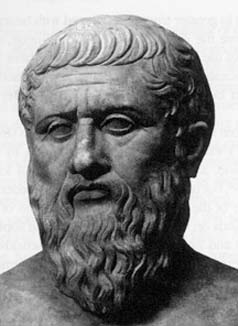
Plato believed all substances to be composed of air, earth, fire, and water.
He believed in a spherical
Earth
![]() which was the center of his universe, and a motion of planets along
crystalline spheres. Plato invented a theory of vision involving three
streams of light: one from the what is being seen, one from the eyes, and
one from the illuminating source. In keeping with his belief that philosophy
should be pursued for the attainment of pure knowledge, he proposed studying
astronomy as an exact mathematical science based on the assumption that motions
were regular and circular. He wanted to discover the truth behind appearances,
but believed that absolute truth could not be derived.
which was the center of his universe, and a motion of planets along
crystalline spheres. Plato invented a theory of vision involving three
streams of light: one from the what is being seen, one from the eyes, and
one from the illuminating source. In keeping with his belief that philosophy
should be pursued for the attainment of pure knowledge, he proposed studying
astronomy as an exact mathematical science based on the assumption that motions
were regular and circular. He wanted to discover the truth behind appearances,
but believed that absolute truth could not be derived.
Plato also described the five regular solids, the
tetrahedron
, ![]() cube
,
cube
, ![]() octahedron
,
octahedron
, ![]() dodecahedron
,
dodecahedron
, ![]() and icosahedron
,
and icosahedron
, ![]() now known as the
Platonic solids
.
now known as the
Platonic solids
. ![]()
For more information:
Send comments about this page to chaki+@cs.cmu.edu